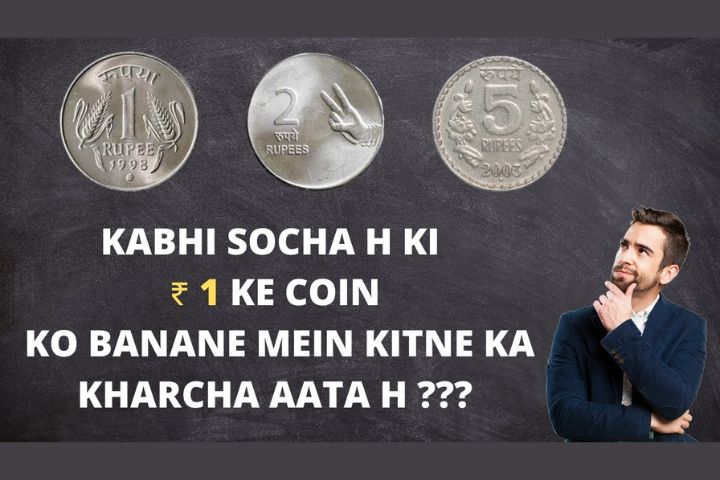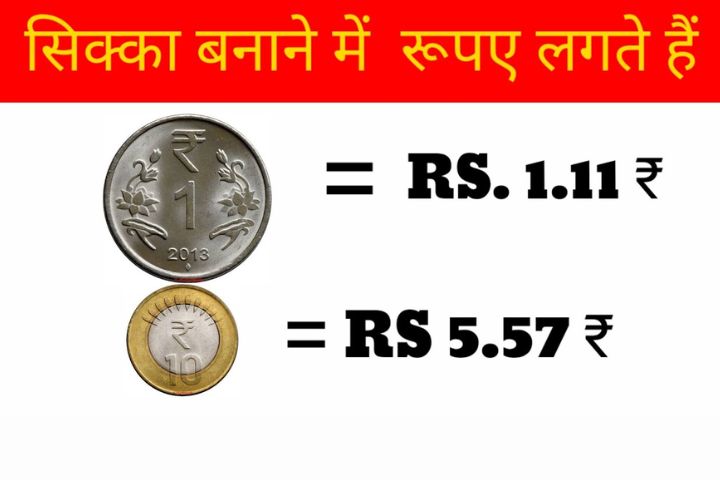“Ek Rupee Coin Ka Manufacturing Cost Kitna Hoga?” The one rupee note is one of the most frequently used denominations in India. It might be hard to remember but in everyday transactions, the size of the coin is too small to be noticed. Yet, from the factory to your pocket, the production involves the requisition for many expensive items, the allocation of these to the needed locations, and the distribution to the customers all of which forms the operations planning, material cost, and logistics geometry of the product. The striking fact is that the minting of a one-rupee coin might cost more than the coin’s actual value. Let’s dig into the whole process, cost allocation, and the future consequences.
How Is a ₹1 Coin Manufactured?
“Ek Rupee Coin Ka Manufacturing Cost Kitna Hoga?” In fact, coin manufacturing services are provided to the Ministry of Finance by the Security Printing and Minting Corporation of India Limited (SPMCIL), which plays a crucial role in producing the nation’s currency. There are four main mints located in India for the purpose of producing coins:
-
Mumbai
-
Hyderabad
-
Kolkata
-
Noida
The process includes:
- Blank formation (cutting metal discs)
- Heat treatment (warming to soften the metal)
- Pickling & rinsing or Splashing (economical and quick cleaning the surface and giving it a bright look)
- Minting (pressing the coin with characteristics
Each stage adds to the total cost of production.
What Is the Manufacturing Cost of ₹1 Coin?
Through RTI responses, reports from the government, and public statements have shown that:
The standard cost of producing a ₹1 coin ranges from ₹1.11 to ₹1.78 subject to:
-
-
Metal prices
-
Labor and energy cost
-
Scale of production
-
During inflation or global metal shortages, this cost can increase even further.
What Materials Are Used?
Over the years, the ₹1 coin has gone through several material changes to manage costs:
| Year | Metal Composition |
|---|---|
| 1992 | Copper-Nickel |
| 2004 | Ferritic Stainless Steel |
| 2011 onward | Stainless Steel (low-cost) |
-
Copper-nickel was phased out due to rising costs
-
Steel is now widely used as it’s cheaper and easier to procure
Why Does It Cost More Than ₹1?
Here’s a breakdown of why the cost exceeds the value:
- Raw materials such as stainless steel are not inexpensive
- Power & fuel for major equipment are extra charges for operations
- Security measures (e.g. armed transport, vaults)
- Employee salaries and the care of the mint facilities
- Transmission and processing at RBI & commercial banks
Combined, these elements push the cost above ₹1.
International Comparison
India isn’t the only country spending more to produce coins. Here’s how it compares:
| Country | Coin | Face Value | Cost to Produce |
|---|---|---|---|
| India | ₹1 | ₹1 | ₹1.11 – ₹1.78 |
| USA | 1 Cent (Penny) | $0.01 | $0.027 |
| Canada | 1 Cent | $0.01 | $0.015 |
Canada eventually stopped minting its 1-cent coin due to high cost India may face a similar dilemma in the future.
Impact on Indian Economy
Producing coins at a loss is a burden on the public exchequer. The money spent on minting could be redirected to:
-
Welfare 0schemes
-
Digital infrastructure
-
Financial literacy campaigns
Thus, minting low-value coins at a loss is not sustainable long-term.
Environmental Impact
On top of that, creating coins also threatens the environment because:
- Carbon footprint surges with increased metal ore mining
- Manufacturing processes that need energy result in the production of greenhouse gases
- Vehicle use depends on fossil fuels and also uses up the energy of packaging.
Choosing electronic trading or using biodegradable money types can also bring a more sustainable way of currency use,
Is There Any Solution?
The government has the opportunity to influence the cost of coinage through:
- Substitution with less expensive alloys
- Restriction of the minting of coins of low value
- Encouraging UPI, and e-transaction through digital media
- People’s awareness of economical currency tenure
- The reuse of old used coins
There is a clear indication that the shift of the people to the digital payment apps (like Paytm, PhonePe, Google Pay) is already reducing the reliance on coins.
Historical Perspective of ₹1 Coin
- 1950s–1980s: Rupee-one was a paper note
- 1992: The first rupee-one stainless-steel coin was introduced
- 2000s: Re-designed to feature fresh designs, Hindi text, and motifs
- 2020: Coins, carrying new “Unity in Diversity” designs, were put into circulation
The ₹1 coin has evolved to reflect India’s technological and cultural progress.
FAQs – Frequently Asked Questions
Q. What is the actual cost of a ₹1 coin?
A. The differences vary between ₹1.11 and ₹1.78 and are influenced by factors such as the cost of raw materials and production.
Q. Why doesn’t the government stop producing ₹1 coins?
A. They are vital in cash-based economies with small transactions as well as in the countryside.
Q. Will ₹1 coins be discontinued?
A. At present, though no formal declaration is made, still the timetable is inclined to move in the direction of digital replacements.
Q. How can the government reduce the cost?
A. By use of less expensive metals, fine-tuning productivity, and reduced broadcast.
Q. Is this coin recyclable?
A. Definitely, old coins are smelted and made into new coins.
Conclusion
When the coin is only ₹1, its cost, energy, and resources for its production are immense. It is the integral part of the economy, starting from the minting process up to the public’s pocket. Despite the expansion of e-payments and the increase in the prices of goods and services, the future of the ₹1 coin is still unclear; however, it supports the small but relevant part of the money segment in India at least for now.








